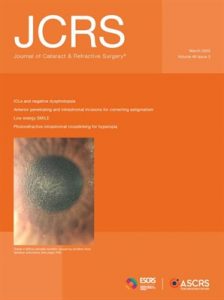NEW SOURCE OF DLK IDENTIFIED
Toxic anterior segment syndrome (TASS) and diffuse lamellar keratitis (DLK) have been attributed to many factors, including surgical technique, instruments and intraocular and extraocular solutions used during surgery. A recent study suggests that autoclave reservoir biofilm may also play a role.
US researchers evaluated 147 eyes that developed DLK following laser in situ keratomileusis (LASIK) over a five-year period. A cluster developed in spite of efforts to changes surgical and operating room protocols. The cluster persisted until an older STATIM 2000 autoclave was replaced with a new STATIM autoclave and a reservoir sterilisation and surveillance protocol implemented. When the retired autoclave reservoir chamber wall was cultured for microbial contamination, Pseudomonas aeruginosa and the Burkholderia cepacia were found. The authors suggest that stringent reservoir cleaning and maintenance may significantly reduce this risk by preventing and removing these biofilms. The article includes a reservoir sterilisation protocol for ophthalmic surgical centres to consider.
AL Soreneson et al., “Diffuse lamellar keratitis associated with tabletop autoclave biofilms”, Vol. 46, #3, 340-349.
PSEUDOPHAKIC CME
The combination of intraoperative phenylephrine 1%/ketorolac 0.3% solution with perioperative bromfenac may limit the occurrence of clinically significant pseudophakic cystoid macular oedema after cataract surgery without the drawbacks of topical corticosteroids, a cohort review suggests. Investigators reviewed 824 patient records, analysing 504 eyes treated in this way. Only two of these eyes developed cystoid macular oedema, a rate of 0.4%. The researchers note that this rate is below the historical rates derived from a literature review of CME development with the use of steroids, alone or in combination with NSAIDs. The researchers believe the combination of intraoperatively delivered phenylephrine 1%/ketorolac 0.3% intraocular solution and perioperative topical bromfenac offers an effective alternative to topical corticosteroids and to combinations of corticosteroids and NSAIDs for limiting the occurrence of clinically significant pseudophakic CME.
K Walter et al. “Rate of pseudophakic cystoid macular edema using intraoperative and topical nonsteroidal antiinflammatory drugs alone without steroids”, 46(3):350-354.
INTRACAMERAL MOXIFLOXACIN DOSES
A contralateral eye study showed that a 500mg dose of moxifloxacin given as an intracameral bolus after phacoemulsification is associated with no difference in central corneal endothelial cell loss when compared with a 250mg dose. The higher dose may have a greater bactericidal effect and may be more effective against certain bacteria. The authors also cite extensive clinical data from hospital groups to support this conclusion.
D Chang et al., “Comparative corneal endothelial cell toxicity of differing intracameral moxifloxacin doses after phacoemulsification”, Vol. 46, #3 355-359.

